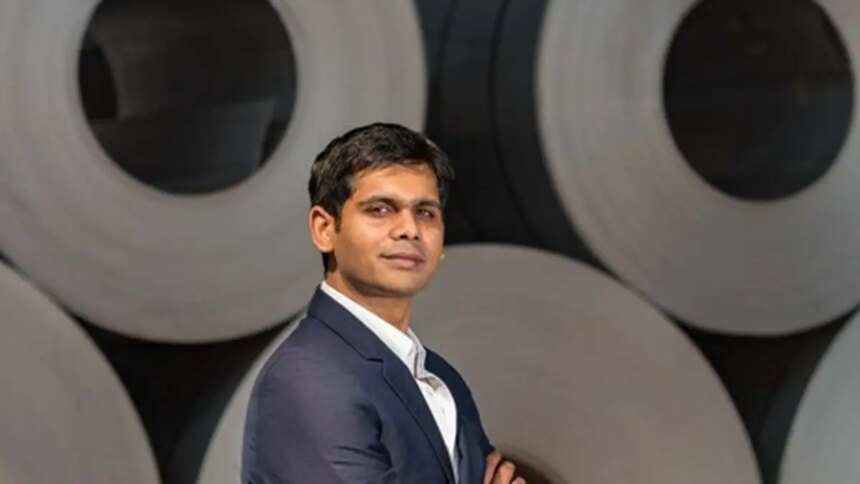
Abhyuday jindal, md, stainless jindal
Inoxidable Jindal saw the internal stainless steel internal demand in the 2015 fiscal year, conducted by sectors such as electric vehicles, trailers and containers, automotive, railway coach, subway, white products and tubes and tubes. However, continuous imports to be a group.
The recent protection tax imposed does not cover stainless steel shipments, and according to Abhyuday Jindal, MD, Jindal, along with other players in the sector, is working on government introduction measures. ”
The company is also working on its expansion plans of ₹ 40,000 million rupees, he said.
In an interview with the Business lineJindal discussed the ongoing discussions with the Government, the Capex plans, the preparation of CBAM and the investment in renewable energy.
Edited experiences:
Stainless steel did not attract a 12 percent safeguard, but are concerned about continuous Chinese spill for the sector. Provide your comments.
Because of the dumping of carbon steel imported with low -priced countries such as China and Vietnam, the India steel industry witnessed the main ridges and channels in import volumes in the domestic market. This development forced the government to protect the sector with safeguarding tasks. While the trend of low -priced products continued in the stainless steel industry, DGTR did not observe significant interruptions in the market, similar to the steel industry. Therefore, this sector did not receive safeguard tasks.
However, Chinese and Vietnamese imports continued to challenge the stainless steel industry of India, representing more than 70 percent of total imports in this prosecutor, with low -price stainless steel or redirected through Asean countries, including Vietnam. Therefore, the government recognizes the threat to the stainless steel sector raised by China and Vietnam.
And we, together with the Indian fraternity of stainless steel, are working with the government to introduce appropriate protection measures.
Jindal Signless announced a ₹40,000 CR Greenfield Plant in Maharashtra. What are the plans in the future?
We are arguing with the state government to acquire a land package for our proposed stainless steel facilities of 40,000 million rupees. Other plans on the size and scale of the plant, which is currently expected to 4 million tons per year (MTPA) will depend completely on the plot and geography of this project. Capex will be drawn for this agreement. This plant will be built in phases, and the first phase can be expected to be operational within four years after obtaining the necessary approach.
The net debt is close ₹4.005 million rupees, and the relationship of net to capital is 0.2. What are the plans for fiscal year 26, considering that the CAPEX requirements are lower in ₹2.7 billion rupees?
Our net debt guide for the period ending in March 2025 is ₹ 3,500 – 3.7 billion rupees. This estimate considers our early operating cash flows and Capex plans for the period. In the fiscal year26, the total capex, which is expected to be ₹ 2.7 billion rupees, which includes spill (Capex not used or FY25) or ₹ 1.1 billion rupees.
Reduced JSL Carbon emissions by 15 percent last year last year. What is the average issuance directed in fiscal year 26 and the cost-benefit that the company draws?
TO: The reduction of carbon emission was achieved through a combination of renewable energy adoption, operational efficiencies and reduction of fossil fuel dependence. The objective for the FY26 is to reduce the average emissions by a similar increase (another 15 percent) of the current levels. It is likely that this keeps us aimed with our broader goal of reaching zero net emissions.
We have the cost benefits per ton or stainless steel produced.
In terms of the use of renewable energies, what is the planned capex?
We have ₹ 700 million rupees in Capex in the coming years to expand the adoption of renewable energy in our facilities. This includes investments in solar, wind (both captive and acquired) and green hydrogen in phases.
We are also exploring associations with renewable energy suppliers to increase our mark of use (renewable). Our goal is a long -term change for our operations to be more sustainable and profitable.
Will the new CBAM report rules affect Jindal stainless sales to the region?
The EU CBAM reports are an important development, but we see how an opportunity instead of a risk. Jindal The stainless steel has been proactive in the decarbonization of its operations, with a clear road map to reduce the intensity of the emissions. This positions us competitively in regulated markets such as Europe.
While the transition report phase can add some administrative steps, we do not anticipate a material impact on sales.
Our scrap based process and the increase in renewable energy consumption will help us mitigate CBAM -related cost pressures. In the long term, we hope CBAM levels the playing field by favoring low carbon producers. We also commit ourselves to EU partners to align our reports and guarantee compliance without problems.
Posted on May 16, 2025










